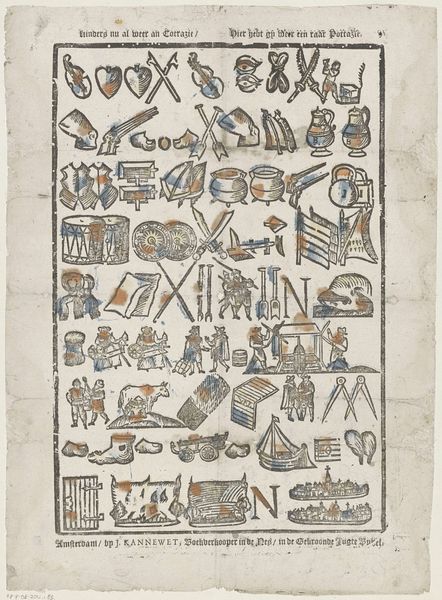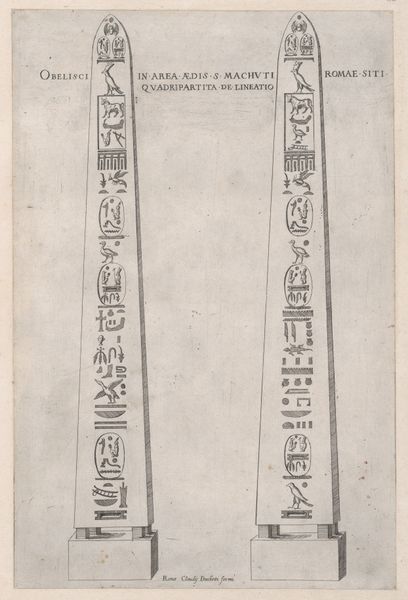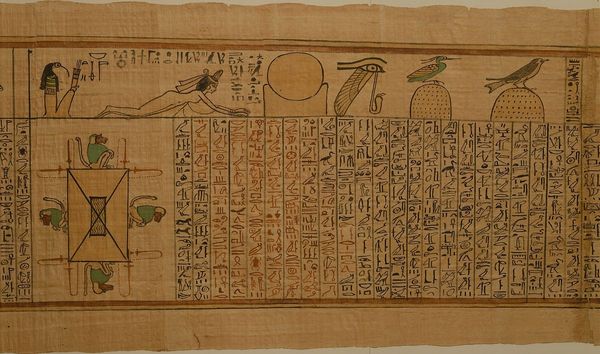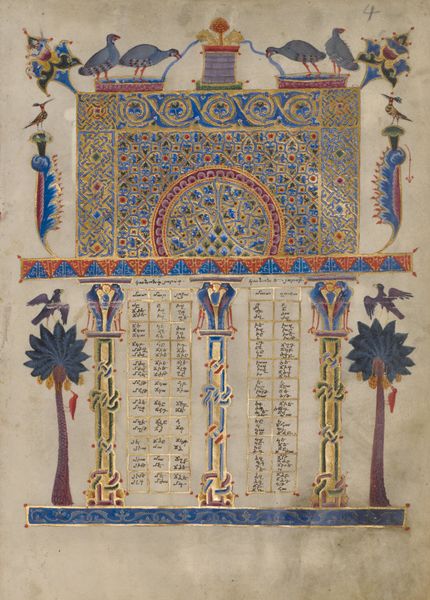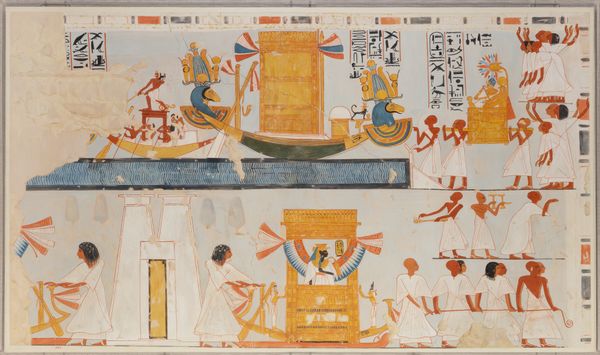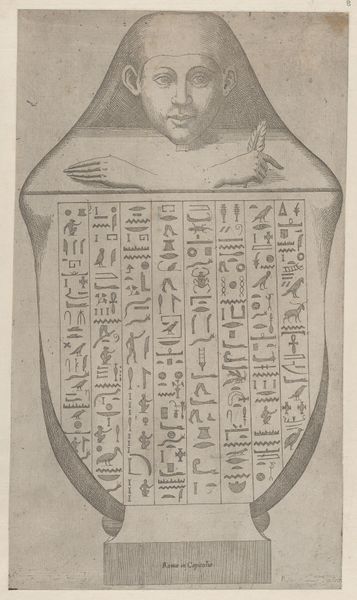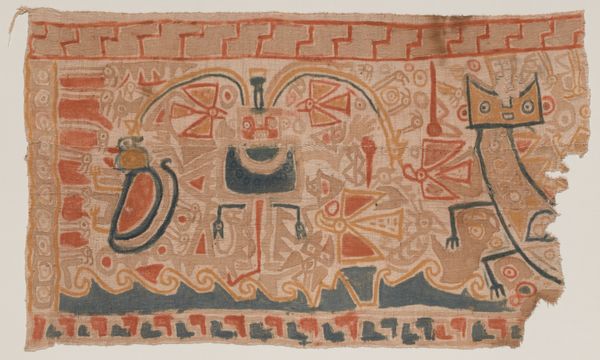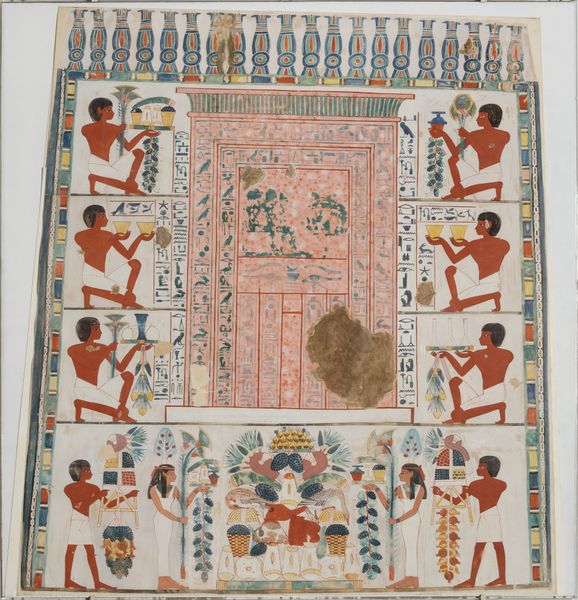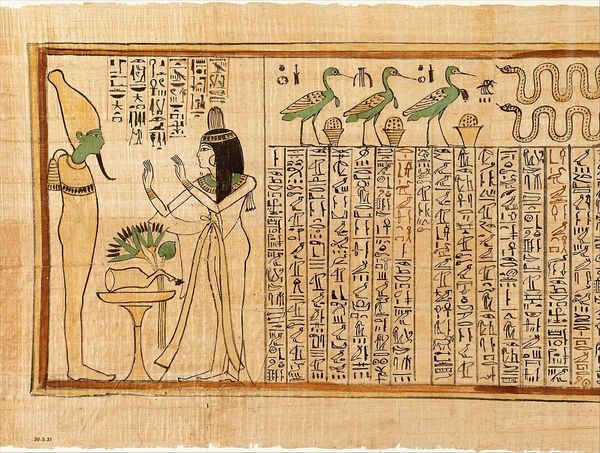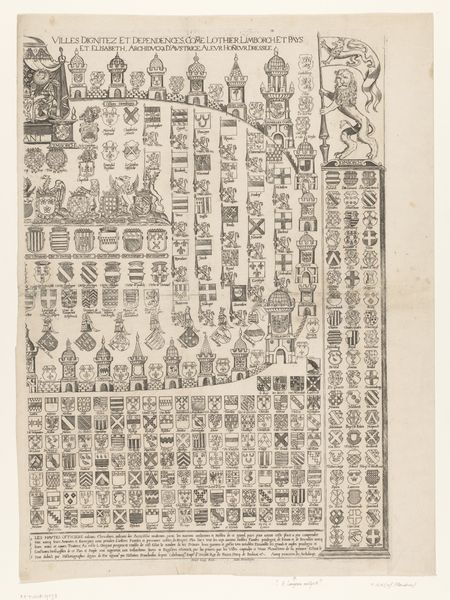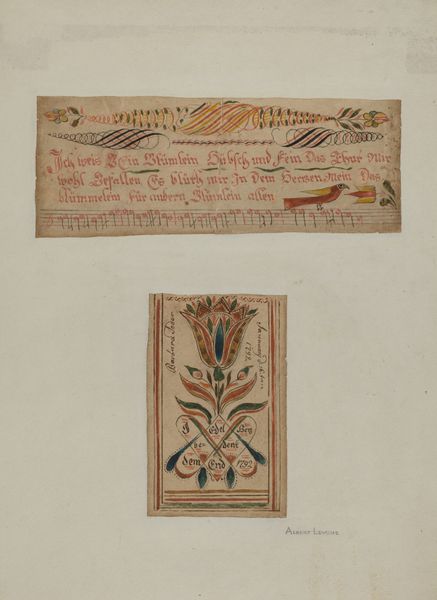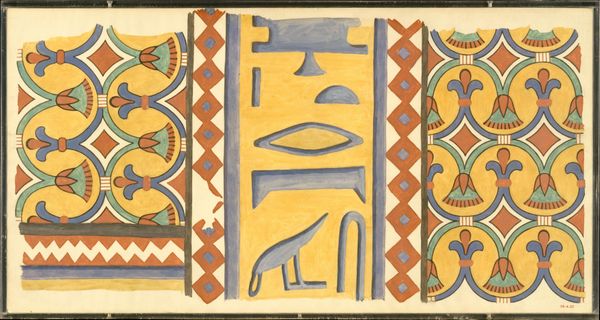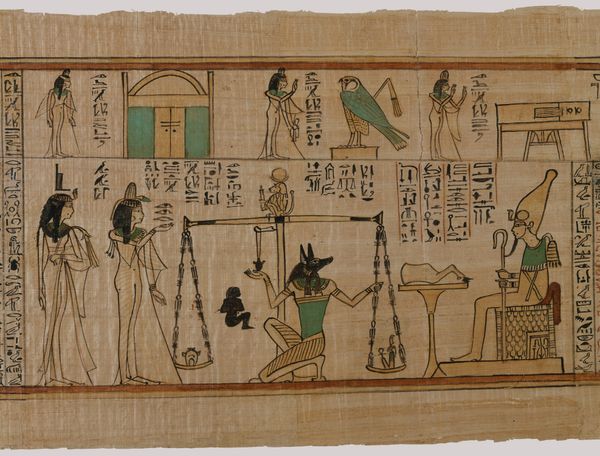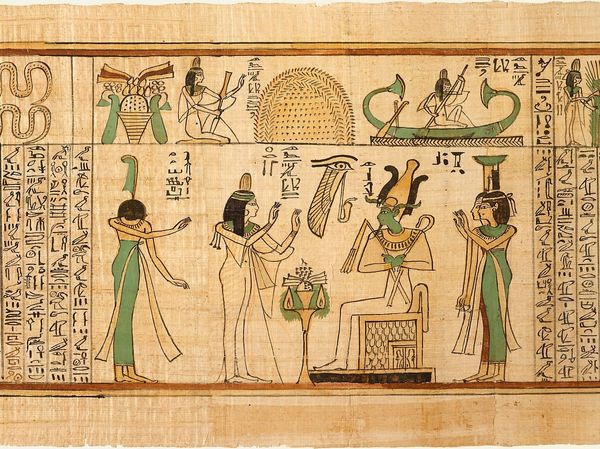
drawing, paper, ink
#
drawing
#
paper
#
text
#
ink
#
organic pattern
#
geometric
#
intricate pattern
#
miniature
#
calligraphy
Dimensions: 39 x 22 11/16in. (99.1 x 57.6cm)
Copyright: Public Domain
This Shiviti, made anonymously with ink on parchment, is a striking image. Look at the way the words are laid out, they make up the image, they *are* the image. The letters are like little graphic marks, all regimented and in line, or fanning out from the center in an almost symmetrical design. The color palette here is minimal, just the black of the ink against the parchment, with the occasional touch of yellow, giving it a grounded, almost earthy feel. But then the letters, those little shapes, start to dance. See that line of script at the bottom? How the letters are bolder, more emphatic? It’s like someone took a thicker pen and just went for it. It shows the hand, the human touch, the *process* of making. It reminds me of work by Ree Morton, in that way it’s so beautifully imperfect. Ultimately, the Shiviti reminds us that art doesn’t always need to shout. Sometimes, it whispers in the shapes of letters and the spaces between.
Comments
minneapolisinstituteofart almost 2 years ago
⋮
The word shiviti (שויתי) comes from the Hebrew root shavah ( שוה) meaning “to set or to place.” This comes from the psalm, “I have set the Lord continually before me.” This verse can also be read as “I am ever mindful of the Lord’s presence.” Its purpose is to serve as a visible, textual reminder of the divine presence by decoratively displaying various names and attributes of God. By focusing on the name of God, the believer is called beyond the physical object to a space of spiritual significance. Shiviti such as this ornamental watercolor on the left would often hang on the wall of a synagogue. The central menorah shape serves not only as decoration but also as a symbolic reminder of the Temple in Jerusalem, the ancient place where God’s presence was believed to rest on earth.Shiviti can also be of a more individual devotional nature. The amulet to the right also bears inscriptions of the names of God. Centered on a similar menorah shape, the amulet reminds its wearer to personally fix him- or herself on God’s holiness.
Join the conversation
Join millions of artists and users on Artera today and experience the ultimate creative platform.
